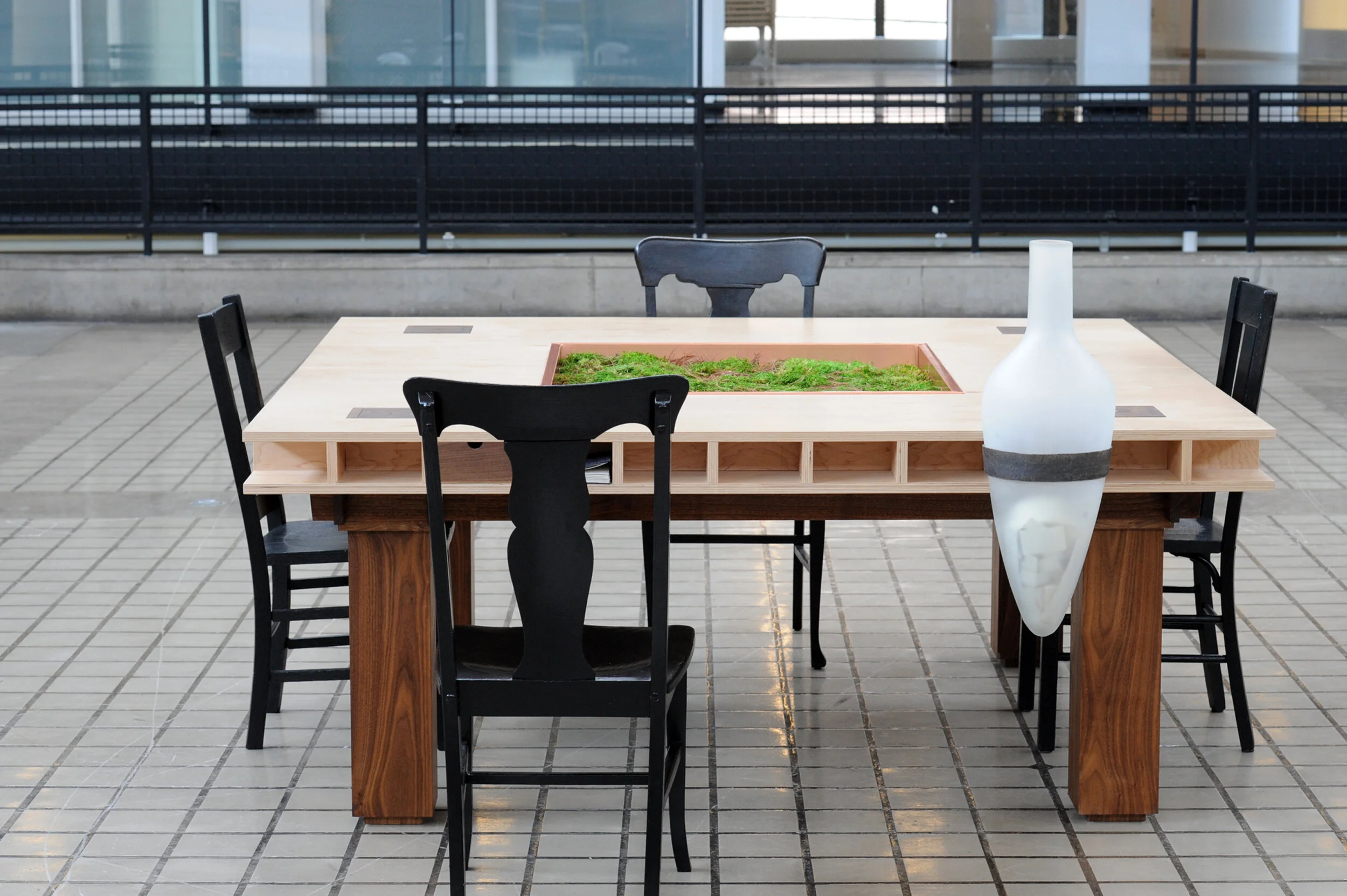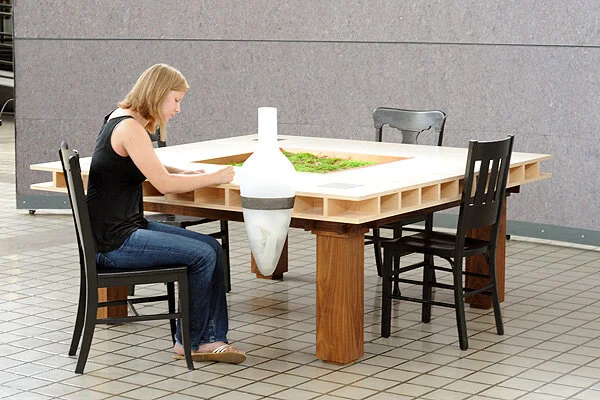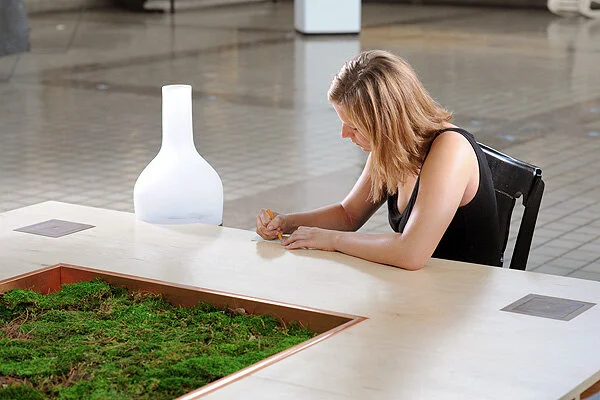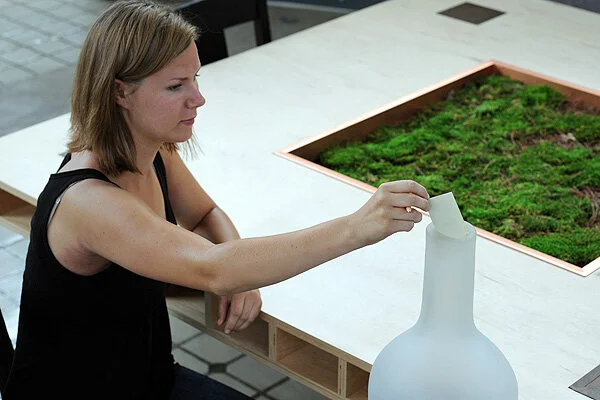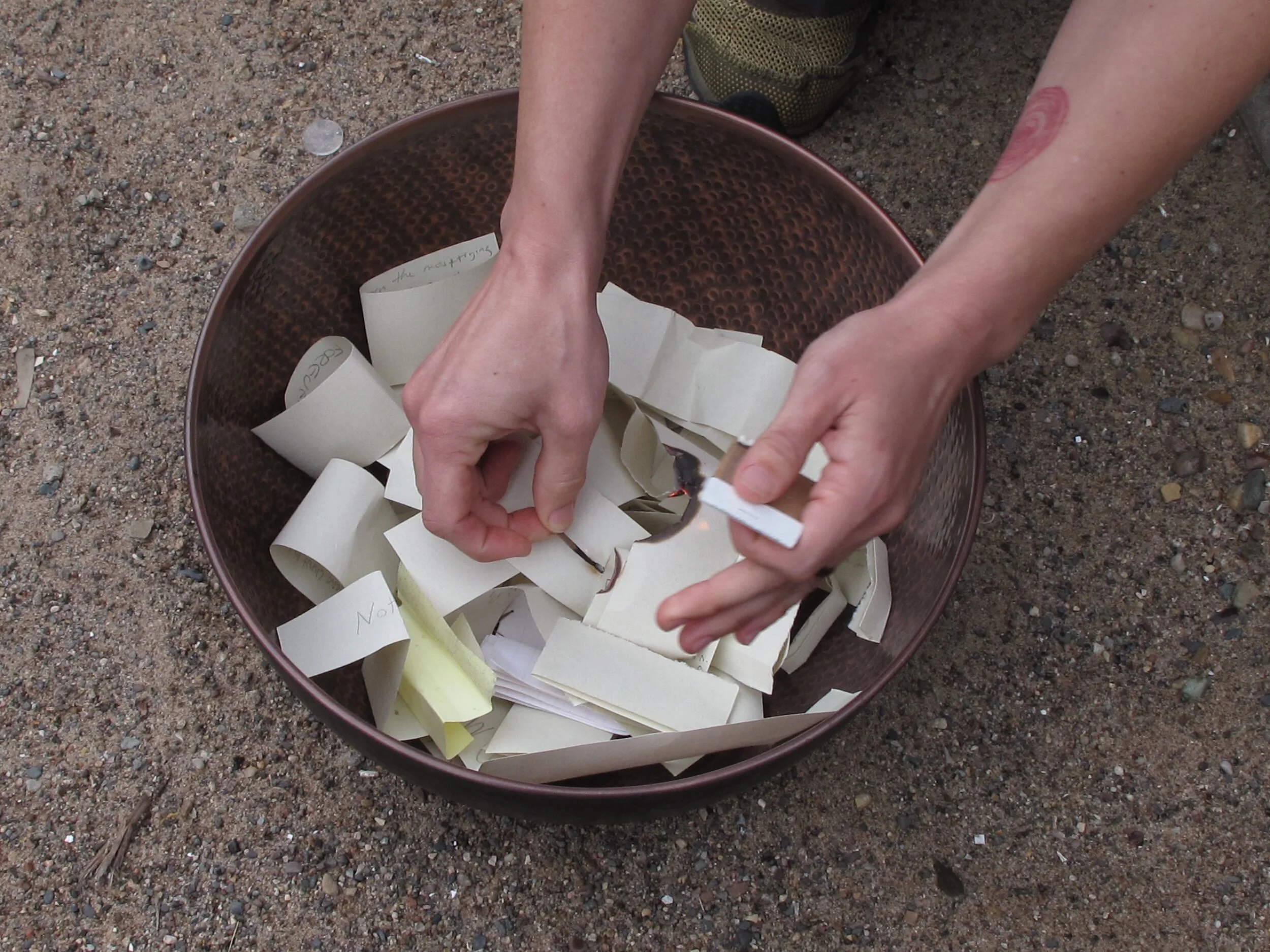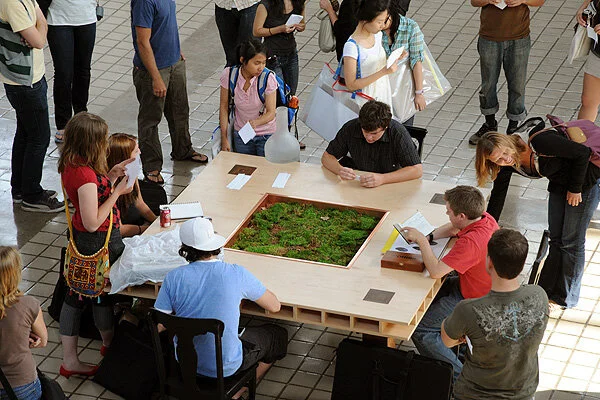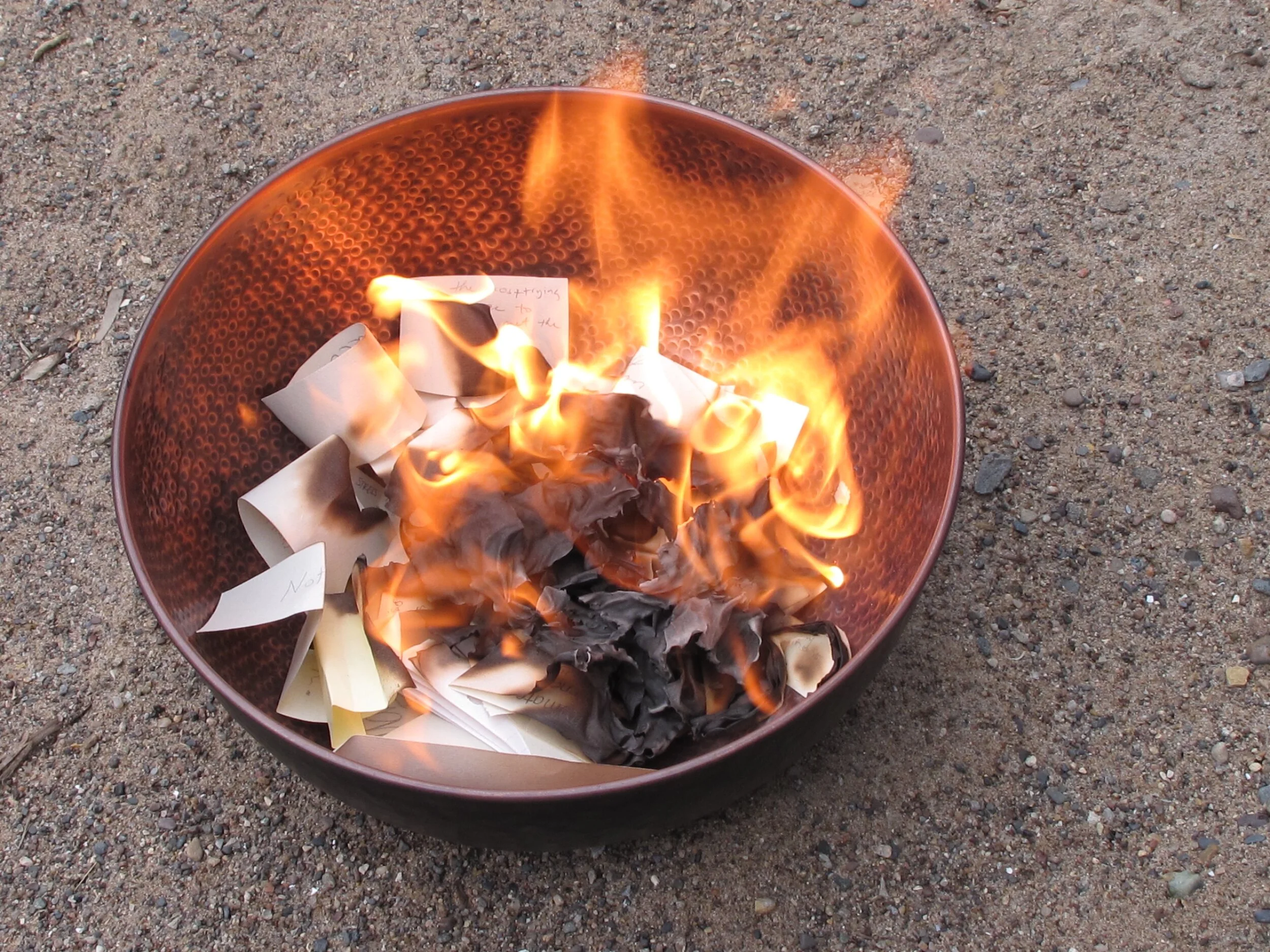The Table for Contemplation and Action: A Place to Share Beauty and Fear
The Table for Contemplation and Action is located in the interior public courtyard of Rapson Hall on the University of Minnesota campus and is in virtually continuous use by students. The six foot square wooden table has a central copper box containing a changing unusual element from the outdoors (to date, pine needles, bark, leaves, moss, beach stones and driftwood). The table also provides students with the opportunity to write about fear/stress/worries and to deposit these writings into the table’s blown glass vessel. Slips of paper and pencils are provided in the table’s drawers. When the vessel is full, the papers are emptied and burned without reading.
Anyone is invited to use the table: for studying, meeting, and eating. Writing is completely voluntary. You learn about the role of the glass vessel through the information and comment book on the tabletop – or through observation or through peers. (If one looks into the glass vessel from above you can see the slips of paper with writing on them, and often read them although that is not the intent; they are often visible to the eye. The other day I read on one slip of paper, “Why am I so critical of others?”)
The vessel’s writings have been burned once. The burning is announced in advance and all are invited to participate or witness: there were about a dozen people (students and faculty) at the initial burning. The vessel is now very full and another burning will take place in October 2010.
The comment book at The Table for Contemplation and Action is filled with dozens of very positive, thoughtful comments and quotes showing that the table is succeeding at providing a contemplative moment and a welcome opportunity to write about stress. A visitor to the table wrote, “We do not take time out of our days to try and help ourselves calm down and a reminder to do that is soothing.” And another: “Thanks for the opportunity to jettison extra thought baggage. I like the smell of the pine in my hands.” Recently someone was inspired to leave a small vase of flowers at the table.
This project extends my work in creating contemplative space by providing contact with nature indoors, while it adds the opportunity for the ritual-like action of writing about (purging) stressful thinking. The research of Roger S. Ulrich and others, including Dr. Jo Barton from the University of Essex is increasingly showing that contact with nature, especially activity in the presence of nature - even as brief as five minutes of contact -can provide measurable health benefit. (Environ. Sci. Technol., 2010, 44 (10), pp 3947–3955, Publication Date (Web): March 25, 2010)
I am also drawing on the work of psychologists Judith Hermann, author of Trauma and Recovery (Basic Books, 1997) and James W. Pennebaker who both describe the beneficial effects of writing to alleviate stress. Pennebaker’s recent works, including Writing to Heal (New Harbinger Publications, 2004) discusses clinical trials indicating that writing about painful experiences can enhance immune response, reduce recovery times, and promote physical, psychological, and social well-being.
The Table for Contemplation and Action highlights the opportunity or necessity for new types of objects/spatial typologies to addresses a wider range of human emotion and need. College students are often a highly stressed population, and this table is a successful prototype of a new designed object/space can help with stress reduction. As a note in the comment book reads, “A wonderful place to sit and study. Sight, texture, smell, lovely. The opportunity to write something down and let it go is very freeing and I am thankful for it.”
Materials: wood (maple and walnut), copper, glass, found objects (chairs), paper; dimensions variable as installation.
Rebecca Krinke, concept/team leader,
Kevin Groenke and Justin Kindlespire, woodworking, metalsmithing,
Peter Zelle and Michael Boyd, glass vessel,
McGrath Architectural Sheet Metal, copper box.
Public Art/Design/Research
Funded by the Institute for Advanced Study, University of Minnesota
